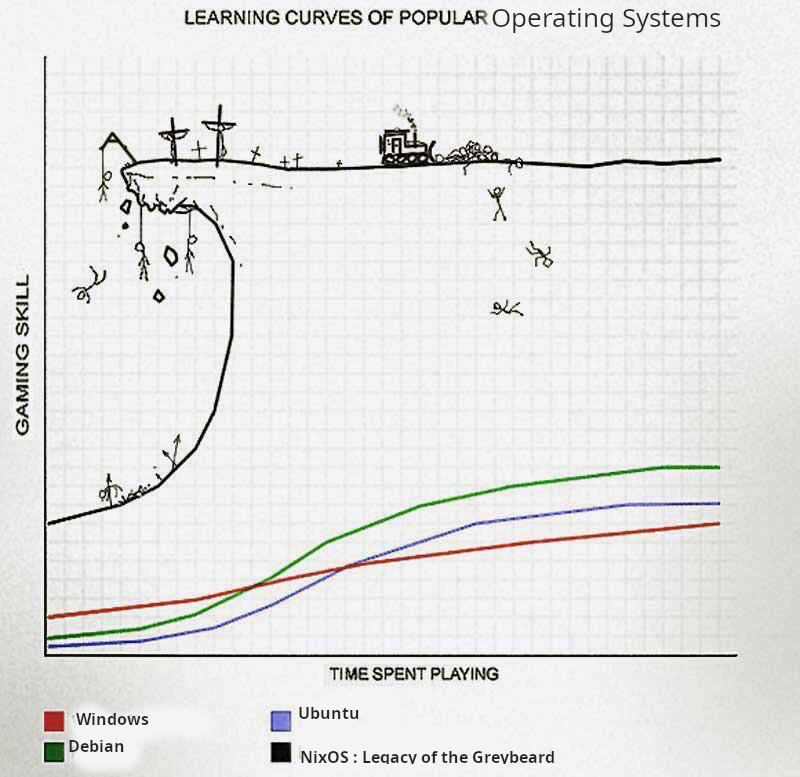Hello,
I just purchased an AMD framework 13 and while I wait (im)patiently for it to arrive, I was wondering what Linux distros people here are using.
I’ve only ever use Ubuntu on desktop, but I think I’m ready to move away from it now, which I guess leaves fedora and mint as officially supported distros.
What have you tried? What are your experiences?
Mint is my goto for newer Linux users, and users that want something that #justworks.
I use Mint on all my personal laptops with the default Cinnamon desktop environment and it’s always incredibly stable.
Mint just announced a few weeks ago that they are partnering officially with the Framework team to make sure compatibility is top notch, so the already good compatibility will become even better over the coming months and years.
The only real downside with Mint, and specifically Cinnamon, is that it looks a little dated. You can get it looking pretty modern and clean, but it doesn’t look nearly as modern and sleek as KDE Plasma or Cosmic. It doesn’t look bad though, and honestly, when I need to just get work done, I don’t need it looking ultra sexy-sleek.
Is Mint using Wayland? If not, how well does it work with touchpad gestures? I’m asking because at least on Fedora, when I try it on X11, it does not have the same level of advanced touchpad gestures as on Wayland.
They have an experimental Wayland session, but it is still in early beta and not ready for regular use.
I don’t use any special touchpad gestures on my laptops, so unfortunately I don’t know that one.
What type of touchpad gestures are we talking about? I’ve got a new FW13 in the mail, and I’m looking for a new distro. I was gonna go Mint or bazzite but now I’m not so sure
I can’t say whether this is a configuration issue or just how x11 is setup, but I was unable to get any gestures working for swapping desktops and showing all open apps. the only gestures working out of the box were scrolling, but it was not a smooth scrolling it was a “mousehweel simulation” scroll, with large jumps. Of course the jump size can be configured but that’s just a mititgation for an otherwise different gesture control. Using Wayland for me, on fedora (x11 was also on fedora) solved all the gestures issues, out of the box.
Thanks for this! I did ask in an old thread over on the framework community, but haven’t heard back. From what I read though, x11 definitely has gesture problems. Most people over there are running Mint or Fedora, with the Fedora Wayland people loving their gestures.
Supposedly Mint has announced they are dedicated to framework compatibility. But until they move to Wayland it’s hard to see how.
Thanks!
Edit: I’m lost apparently. I have another thread where I’m asking Linux distro questions. I thought this was that, sorry.
Thanks for the information, I’ll have to do some testing and see what I come up with.
Personally, fedora with Wayland is a great combo. I love Plasma and Wayland has not caused any issue on my side, despite rocking an nvidia GPU on my laptop (dell xps 15 from 2020). I spent multiple weeks playing Valheim on my laptop and it ran very well on Wayland, no issue. And that was early 2023.
I personally recommend it.
Mint personally didn’t stick with me, and I settled on Kubuntu. I felt like troubleshooting ended up being a lot more opaque and frustrating on mint than on kubuntu, and I felt like there were a lot of little accessibility features that were missing on mint.
Kubuntu (KDE in general) is more overwhelming at first, but I feel like it’s much more of a “set it and forget it” experience
Slightly off topic, but whatever distro you choose you probably want to use the kernel parameter
amdgpu.abmlevel=0because without it the display gets super washed out and low contrast when the laptop is in power saving mode which drove me insane until I figured out that parameter.Thank you, that’s good to know
I would recommend you Aurora or Bluefin. They’re both the same, but one is KDE, and the other is Gnome.
They are pretty much indestructible, ultra-low maintenence (staged automatic updates, etc.), different branches, great quality of life tweaks and more included.
It’s a bit similar to how Android works, but powered by a common PC.
With the great touchpad both KDE and Gnome would shine due to their smooth gestures they offer.
I’m trying Aurora on a Dell with Amd. I had the bitlocker issue coming from windows 11 that slowed the installation process. The os seems fine, I’ve used Mint and Ubuntu. I spent a good hour trying to get my flatpak apps to show up in the launcher, so that wasn’t fun.
While I like the concept of keeping the os immutable and all apps running in a container, I’m not sure this is the best setup for me. I feel less in control which I have become used to under other distros.
Anyway, I’ll stick with it a bit more and see how it goes. Battery life is good and everything else seems to be working.
What type of touchpad gestures are we talking about? I’ve got a new FW13 in the mail, and I’m looking for a new distro. I was gonna go Mint or bazzite but now I’m not so sure
Mint if you are coming from Windows.
Pop!_OS if you are coming from Mac.
Pop!_OS on a Thinkpad has been my daily driver for five years now. Not a single problem, ever. Rock solid.
Have you tried pop on the framework? Have you had any compatibility issues?
Currently running Pop on my Framework with the Cosmic DE. Pop was rock solid before. Alpha software brings in bugs of course, but it is still surprisingly stable.
Just checked out cosmic. It looks fantastic! What kinds of bugs have you experienced?
A couple of weird things with displays every now and then, and I haven’t taken the steps to get the fingerprint scanner to work. I also can’t use the Proton VPN app, I have to install each VPN manually.
I do not have a Framework but it is my understanding that they are designed for maximum flexibility and compatibility. I doubt that you will have any issues.
Frankly, anything with KDE Plasma (like Fedora), is a pretty solid choice too for people coming from Windows.
@JoMiran @anytimesoon
RedHat if you’re coming from OS/2. 25 years now, going strong.I too ran OS/2 back in the day (started with 2.0). I started my Linux journey with Red Hat Halloween in 95(?), but I tend to only recommend Debian based distros to beginners due to the vast amount of support available for that flavour. On the server side, it’s still RHEL and its forks.
@JoMiran yeah, I have a lot of Debian in my home infrastructure. It does help and open up opportunities for beginners as a ton of tools and tutorials are from a Debian perspective (read: Raspberry pi and Ubuntu)
I’ve been using Fedora KDE spin on my Framework 16 and it absolutely rocks! 😁
After Ubuntu for many years I switched to Arch because they packaged a number of things I wanted that Ubuntu did not.
If you are happy with Ubuntu stick with that. I have friends and family that use it and it’s fine.
I’ve used UbuntuDDE and Manjaro, and they both ran fine, although that was back on my Intel mainboard. Now, on my AMD mainboard, I currently use ZorinOS and my roommate uses Kubuntu on his. I didn’t need to switch, I just wanted to check out Zorin again. You used to have to run a script to install an OEM kernel but I think as of some recent updates that’s no longer necessary. My only negative is the battery drains a lot in sleep mode, so it’s better to shut down.
That battery drain issue is one I’ve ready a lot, unfortunately.
Just checked out zorin, since this is the first I’ve heard of it. Sounds like being able to run windows apps is it’s main USP, if I’m not mistaken. What’s your experience with thatm
So you can set up other distributions to run Windows apps as well, Zorin just makes it a little easier. When you first try to run a Windows executable you’ll be prompted to install the necessary components to run Windows apps. After everything is set up, a decent number of windows apps can be run straight from the file browser without having to open up bottles or something. Not everything will run though, and for games you may get better performance running through bottles or lutris.
Thats pretty awesome. The only thing I miss from windows is the affinity 1 suite. Never been much of a gamer, so that’s not such a big deal.
I like the idea that it’s based on Ubuntu, since that will keep things familiar. What I’m trying to get away from though is the snaps. I didn’t mind them at first, because they could just be ignored, but not anymore
This may be of interest to you. I run Debian testing on mine.
Debian + Nix + Flatpak is a pretty sweet combo!
Ive been using Gnome with Fedora ever since I switched to Linux. So far it has been smooth sailing. I would say the choice of distro doesn’t matter that much, both Mint and Fedora are very easy to use. Just pick one with the Desktop Environment you like the most. If you are not sure, test them on a Virtual Machine.
Oh yeah, I always forget about that website. It’s quite good for testing out a lot of distros fast, but you need an account to have internet, you can’t use keyboard shorcuts (idk if there is a way to make them work) and they are a bit slow. It’s still worth a shot, though!
I run Garuda on my 16 and my desktop PC.
It’s basically a KDE-centric Arch build but with some quality of life tools and XTREME GAMER default theming, plus you’re not legally required to say you’re using Arch all the time.
No complaints so far. Sure, you’re expected to update all packages on your computer about once per day but I find that process to be fairly smooth. You can always configure your desktop to stop looking like a bordello for dragons and I rather like how
garuda-updateautomates some of the housekeeping involved with the package manager.If I had to pick a different distro I’d probably try out something immutable but so far I have no intention to switch.
NixOS

I have run Fedora and NixOS on my framework. Both run well, Fedora is equal/close equal to Ubuntu in ease of use.
I’m on CachyOS and it has been pretty rock solid. Was also on OpenSUSE Tumbleweed for a while and that also worked well.
I like CachyOS as the performance difference was actually noticeable and there are a couple things on the AUR that I prefer to not be installed as flatpaks.
Relevant :)

I think the real question is what do you want to learn?
If you want to learn Linux for a job I would recommend Fedora. The packages are up there with Arch in terms of being close to latest. SELinux, a security architecture, is standard in the RHEL ecosystem (Fedora is the testing distro for Red Hat Enterprise Linux). DNF gets a lot of flak for being slow but with the recent update to DNF5 in Fedora 41 there are noticeable improvements.
If you want to learn what’s going on under the hood in traditional Linux, use Arch.
If you want guard rails so you don’t break things, use an immutable distro like Bluefin.
Heck, distro hop for a bit so you learn how to answer this question for yourself :) – you can check out separate home partitions so you can change distros, or install multiple, without getting rid of all of your settings / data. Use nix package manager and home-manager so you can reproduce your configs when you distro hop.
Don’t think too hard about the DE. You can always switch to a new one. I generally keep 2-3 DEs on my system at a time so I can change it up at the login screen if the mood strikes. It takes all of 15 min to get set up for an absolute newbie.










